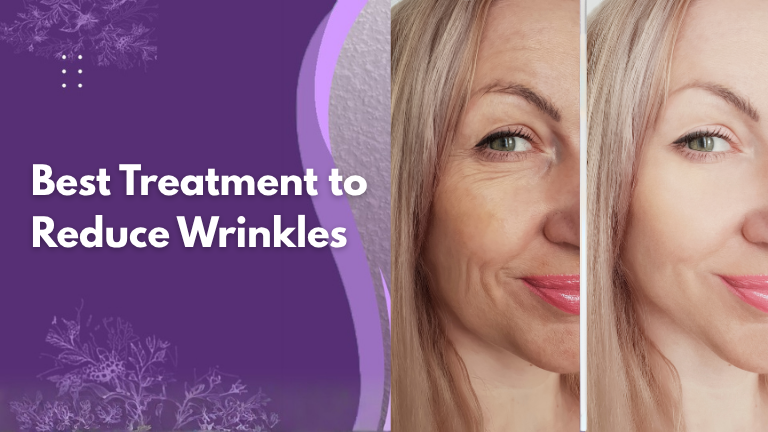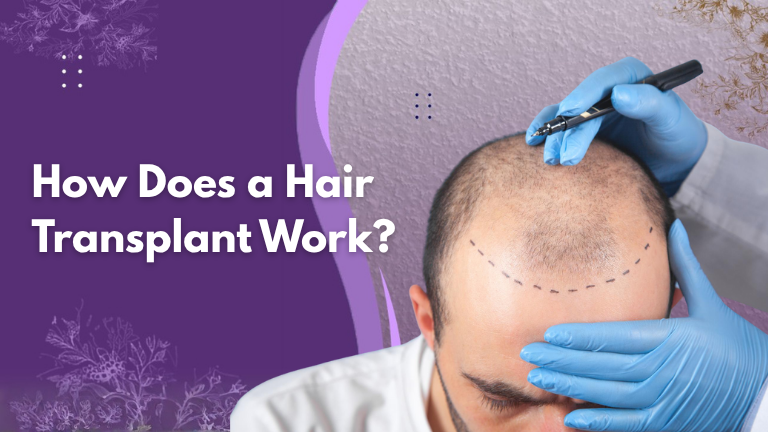The stigma around plastic surgery has fallen significantly in the last couple of years, leading to an acceptance of cosmetic procedures. The demand for filler treatment has increased, with over 2 lakh procedures being performed in India every year. In this blog we are going to see about the complete guide about what is fillers? and their benefits, procedure, treatments and also side effects.
What is a filler?
Dermal fillers are a type of non-surgical cosmetic treatment that uses injections to correct wrinkles and smooth lines on the face. Filler treatments are used to reduce signs of ageing by adding volume and smoothness to targeted areas. Dermal fillers are commonly made of substances like hyaluronic acid or poly-L-lactic acid.
What are the types of fillers you can get?
As people age, the structure of their skin changes due to a decrease in the regeneration of skin cells. The firmness of skin is maintained by a compound called collagen, which decreases as people age.
Filler treatments can restore the plumpness and shape of the skin, removing wrinkles, lines, and any other changes that make the skin look older.
Fillers are injected into the skin and can be used for various purposes, including:
- Shaping the lips
- Defining the jawline
- Filling in forehead lines
- Plumping cheeks
- Reshaping the nose
What are fillers made of?
Dermal fillers can be made of natural compounds that are found in the body or synthetic compounds. Fillers are usually injected into the dermal layer of the skin and can be made of the following substances:
Hyaluronic Acid (HA)
Hyaluronic acid is a naturally occurring compound in the human body. It is found in the skin, joints, and connective tissues. It is used as a filler because it can smooth out wrinkles and add volume to the skin.
Hyaluronic acid treatments are the most popular as they are the safest. Due to the nature of this compound, it is also easily absorbed by the body. So the results of such fillers are not as long-lasting as other treatments.
Calcium hydroxylapatite (CaHA)
Calcium hydroxylapatite is also a compound that is found in the body, specifically in the teeth and bones. It is used as a filler because of its ability to easily integrate with the body. This compound also stimulates the production of collagen in the skin, which gives it extra support.
Poly – L – lactic acid (PLLA)
Poly – L – lactic acid is a material that is frequently used in the medical field due to its biodegradable and non-toxic nature. This compound works by stimulating collagen production over time, altering facial structure to make it look youthful. Filler treatments using PLLAs last for several years.
Polymethylmethacrylate (PMMA)
Polymethylmethacrylate is also a synthetic compound that is commonly used in medical implants and filler treatments. This compound is composed of microspheres that can provide support to the skin. Fillers using this compound tend to last longer than others and can even provide permanent results.
What does the procedure for a filler treatment look like?
The process of getting a filler treatment is pretty simple. To begin with, your skin doctor or surgeon will cleanse the area of your skin where the filler will be injected. An anaesthetic will be applied to the region to numb any pain. Next, a needle will be inserted into your skin, and a filler will be injected into the area requiring treatment.
Finally, your doctor will cleanse your skin and give you an ice pack to soothe any swelling or pain. This procedure is quick and relatively painless. If you experience any discomfort, it is usually mild and will disappear in a couple of days.
How long the results last depends on the type of filler used and the condition of the individual’s skin. Most people can see the results immediately after an injection; however, in some cases, it can take a while for the effects to become apparent.
Precautions to take when getting a filler
There are a couple of pointers to keep in mind if you’re considering getting a filler. These tips will help you prepare for and navigate any cosmetic procedure:
Discuss your medical history with your doctor
It is essential to discuss your medical history in detail with your doctor before undergoing any treatment. If you have any pre-existing condition that can interfere with the procedure, your doctor will have to evaluate if it’s safe for you to undergo the procedure. If you’re on any medication, you may be advised to discontinue them before the procedure. This is to minimise the risk of complications.
Maintain a healthy lifestyle
In order for the filler treatment to go well, it is essential to be in good health. Make sure you eat a balanced diet, stay hydrated, and get plenty of exercise. An illness could affect your ability to get the filler, so paying attention to your health is crucial.
Be sure of your decision
Be absolutely certain that you want to get fillers before you undergo the treatment. Filler treatments are difficult to reverse, so it’s important to evaluate your reasons for getting one. Make sure you consider alternative treatments like skincare or facial treatments and don’t get the procedure done on a whim. Take the time to explore your options with a doctor.
Side effects of fillers
Before you decide to get a filler treatment, it is important to be aware of some side effects that may arise, so that you can make an informed decision.
Common symptoms
- Swelling: This is a typical response to fillers and usually subsides in a few days. However, if it is severe, it can be treated with ice packs and anti-inflammatory medication.
- Pain: Mild discomfort is a common reaction. This is usually manageable with painkillers; however, if it is severe or doesn’t subside in a day or two, you should consult your doctor.
- Redness and itchiness: This is another common reaction to filler treatments and is part of the healing process. Applying a cold compress is usually helpful fillers in alleviating symptoms.
Uncommon symptoms
- Damage to blood vessels: While rare, if the injection is done by an inexperienced surgeon, there is a chance of injecting the filler into the blood vessels. So, be sure to select a qualified Plastic surgeon for the filler treatment.
- Filler leakage: There is also a possibility of the filler leaking from the injection site due to an allergic reaction or infection.
- Allergic reaction: There is a possibility of patients developing an allergic reaction to filler compounds. This could result in swelling, redness, or bumps forming on the skin.
Other symptoms include bleeding and tissue death. It is critical to seek emergency care from your doctor if you experience any of these symptoms after receiving a dermal injection.
What does Fillers recovery look like?
The recovery period for a filler treatment is typically a couple of days. Patients can resume their normal lifestyle in a day or two. However, any strenuous activity should be avoided.
Patients who receive the treatment typically experience redness, swelling, or tenderness. These symptoms will disappear in a day or two. You should see a doctor if the symptoms worsen or last for more than a couple of days.
Be sure to follow your doctor’s instructions and attend all post-procedure check-ups. Don’t touch or use any products on the site of the injection. Drink plenty of water and maintain a healthy lifestyle to help your recovery process.
Aftercare tips
To achieve the best results for your dermal filler, it is essential to follow proper aftercare tips.
- Avoid disturbing the area: For the first day or two after getting the filler, it is imperative that you avoid touching the area or disturbing it in any way. Avoid rubbing, scratching, or putting pressure on the site of the injection.
- Attend check-ups regularly: In order for your recovery to go smoothly, it is important to attend all the follow-up appointments scheduled by your doctor. Your doctor will be able to monitor if your recovery is going smoothly and address any concerns that may arise. Be sure to not miss any appointments.
- Avoid exposure to heat: Heat exposure could damage the effects of a filler. So, avoid going out in the sun for a few days after getting your filler. Be sure to stay covered up if you have to.
- Monitor your skin: Monitor your skin for any signs of abnormalities and contact your doctor if you experience any adverse reactions, like bleeding or extreme pain.
- Maintain a healthy lifestyle: Drinking plenty of water and getting enough sleep can be beneficial. Be sure to follow a healthy lifestyle and eat nutritious food to help your skin heal.
Botulinum toxin injections
Botulinum toxin injections are neurotoxins that cause muscles to freeze. These injections are used for both medical and cosmetic procedures.
What is it made of, and how does it work?
Botulinum toxin injections are made from a toxin that is produced by a bacteria called bacterium Clostridium botulinum. This toxin is one of the most lethal substances known to man. It blocks nerve function and causes muscular paralysis.
When used in small doses, it is relatively harmless and can be used to treat certain muscle-related issues. In cosmetic surgery, it is used to smooth out lines and wrinkles by freezing the underlying muscles.
It is important to note, however, that it is not a permanent solution, and the continuous use of botulinum toxin has risks.
Treatments using botulinum toxin
Botulinum toxin injections are used to relieve neck pain and to smooth out wrinkles on the face. This compound is also used to treat the following conditions:
- Neck spasms
- Migraines
- Lazy eye
- Remove frown lines
- Remove crow’s feet
Things to know about botulinum injections
- Botulinum toxin injections don’t work well on older skin.
- Frequent use of botulinum can lead to weaker muscles.
- Some people report having thinner skin after the treatment.
- People with weak muscles, drooping eyes, or muscular disease shouldn’t get the injection.
- It is generally not advisable to get these injections when you’re pregnant or breastfeeding.
Difference between botulinum injections and other fillers
Both botulinum injections and other fillers are used to correct lines and wrinkles. However, the difference lies in how they function. Fillers can be synthetic or natural products that help change the structure of your skin.
Botulinum injections, in contrast, work by freezing the muscles in the targeted area. Neither fillers nor botulinum injections offer a permanent solution, and people will need to get touch-up treatments to maintain the results.
Have a conversation with your doctor to discuss the options available to you and decide which one works best for your skin.
Conclusion
Fillers are a popular cosmetic treatment option that are quick and relatively pain-free. There are several treatment options available, with different types of fillers and various regions of the face that can be corrected – like the lips, forehead, cheeks, etc.
Having a complete understanding of the filler treatment process, including the possible side effects and proper aftercare tips, allows you to make a sound decision on whether a filler is the right choice.
FAQs
How long does a filler last?
How long a filler lasts depends on a number of factors. Filler treatments typically last for around 6 months to a year. Certain types of fillers provide effects that can even last up to 2 or 5 years. The results vary depending on the type of filler used, where it was injected, and the individual’s health.
How often should you get a filler?
Fillers are gradually broken down by your body, so the effects will wear away with time. You may need to schedule touch-up treatments every few years to maintain your desired results. How often you should get a touch-up will depend on the type of filler used and the condition of your skin.
When should you consult a doctor?
You should visit a hospital immediately if you experience severe symptoms like bleeding, extreme pain, or other unusual reactions.
Also Read: Hair Botox Treatment in Chennai




